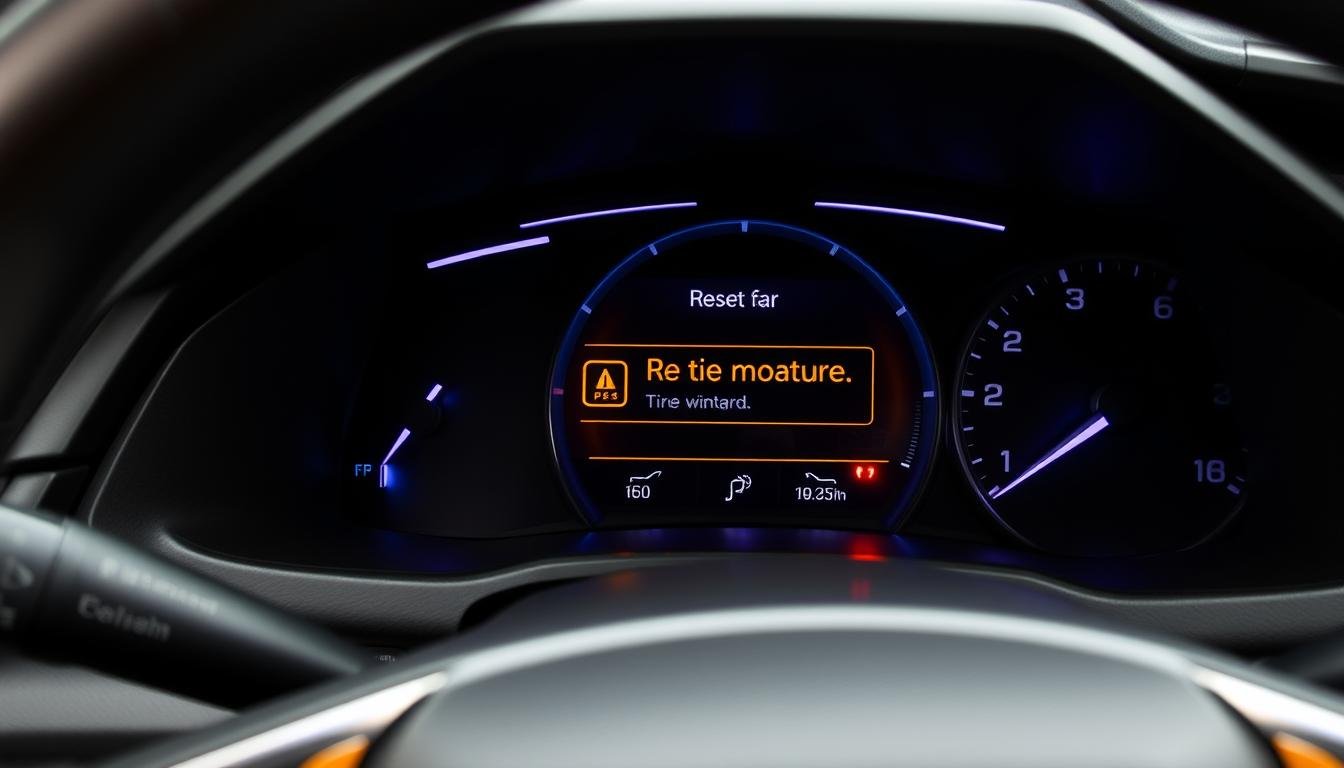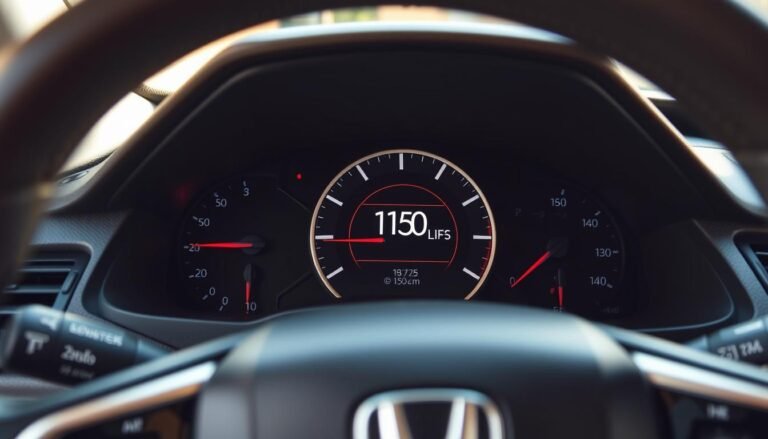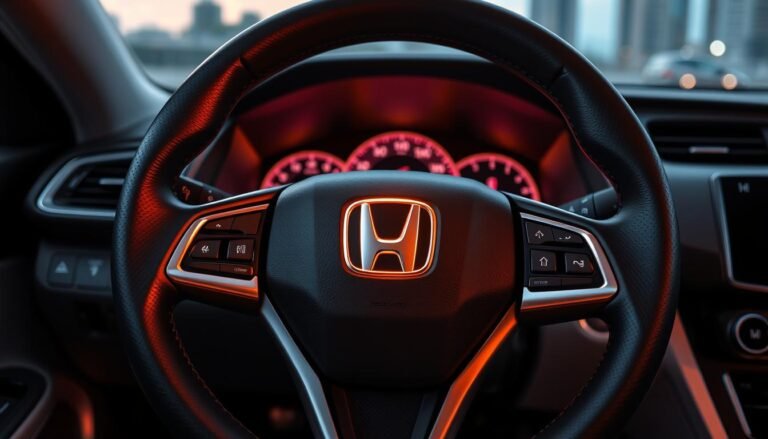How To Reset Tire Pressure Light Honda Civic? Quick Guide
Wondering how to reset the tire pressure light on your Honda Civic? It’s an easy process every owner should master.
Your car’s tire pressure monitoring system (TPMS) is key to safe driving. It warns you if your tire pressure is too low.
This can influence how your car handles and its gas mileage. When the light comes on, it means a tire needs air. Here’s a simple guide to fix that.
First, make sure all your tires have the right amount of air. Then, follow the reset steps for your Honda Civic’s model year. This keeps your car running smoothly.
We’ll show you why keeping the right tire pressure matters. And how to turn off that tire pressure light step by step.
The Importance of Tire Pressure in Your Honda Civic
Keeping the right tire pressure is key for your Honda Civic’s safety and how well it performs.
The correct pressure improves traction and handling, making your drive smooth and steady.
If tires don’t have enough air, they can’t grip the road well, which might make you lose control. Too much air in tires can make the ride rough and increase the chance of tire blowouts.
Not having enough tire pressure also affects how your car handles and causes tires to wear out faster.
By managing your Honda Civic’s tire pressure, your tires will last longer. This can save you money on new tires over time.
You should check your tire pressure regularly, at least once a month and before going on long trips.
Look in your owner’s manual or on the driver’s side door jamb for the right tire pressure.
Checking your tire pressure often can also help your car use less fuel. When your tires have the right amount of air, your Honda Civic works better.
This means you’ll save gas money and help the planet by lowering emissions.
| Tire Pressure Condition | Impact on Vehicle |
|---|---|
| Under-Inflated | Decreased traction and handling, increased tire wear, risk of blowouts |
| Over-Inflated | Harsh ride, quicker wear in center of tire, risk of blowouts |
| Correct Pressure | Optimal traction, handling, fuel efficiency, reduced wear |
When Does The Tire Pressure Light Come On?
The tire pressure monitoring system (TPMS) is key for your Honda Civic’s safety. When the tire pressure light turns on, it usually means a tire is low on air.
This happens if the air is 25% below what it should be. Ignoring this light might lead to safety and handling problems.
Cold weather can make the TPMS light come on too. This is because cold air makes tire pressure go down.
If the light goes off after a bit, your tires might have returned to normal pressure from driving.
But if the light stays on or blinks, you need to check it right away. This could mean there’s a serious issue with your Honda Civic’s TPMS.
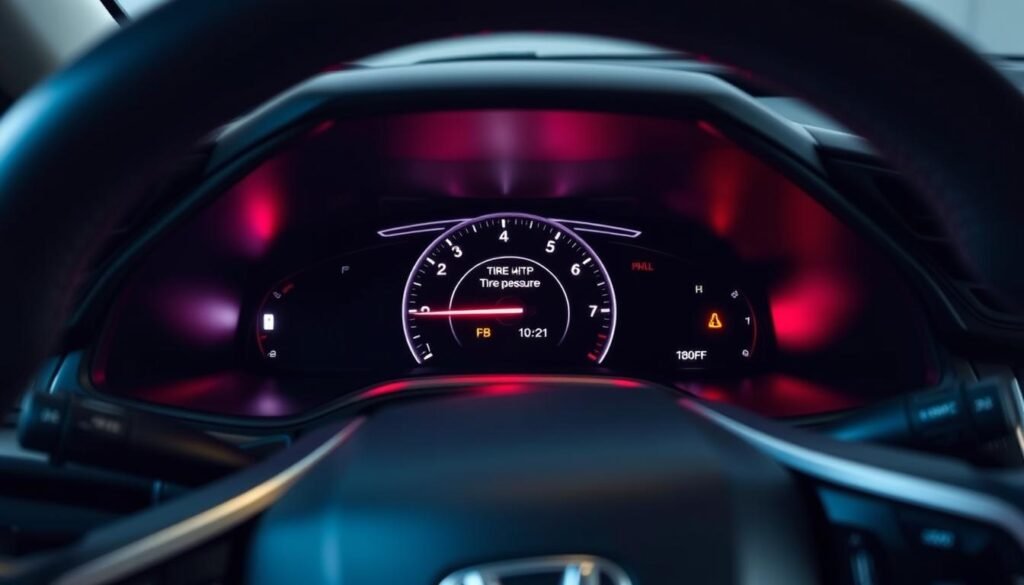
Keep an eye on your tire pressure and take action if the light warns you. Doing this makes your drive safer and your car perform better.
How To Reset Tire Pressure Light Honda Civic: Step-by-Step Guide
Resetting the TPMS light in your Honda Civic ensures the system works well. You should do this after you put air in your tires, rotate them, or change them.
Here’s how you can reset the tire pressure monitor in your Honda Civic.
Resetting TPMS in New Honda Models
To start on new Honda models, first go to the touchscreen settings. From the main screen, pick “Settings,” then “Vehicle,” and click on “TPMS Calibration.”
Choose “Calibrate” to begin recalibration. You’ll need to drive for about 30 minutes at speeds of 30-65 mph.
Resetting TPMS in Older Honda Models
Owners of older Hondas should look for a button near the steering wheel. Press and hold it until you see the warning light blink twice.
You can also use the Driver Information Display. Hit “Menu,” go to “Customize Settings,” select “TPMS Calibration,” and finally, press “Initialize.”
If these steps don’t work, check your owner’s manual for instructions specific to your model.
| Model Type | Reset Method | Additional Notes |
|---|---|---|
| New Honda Models | Touchscreen Settings | Drive between 30-65 mph for 30 minutes |
| Older Honda Models | Button Press or Driver Information Display | Consult owner’s manual for more guidance |
Common Reasons Why The TPMS Light Might Not Reset
If your Honda Civic’s TPMS light won’t shut off, think about a few things first. Incorrect tire pressure can often trigger issues.
Not getting the levels just right will tell the TPMS something’s off, leaving the light on. Bad sensors are another problem.
They might wear out or get damaged over time. This can make the readings go haywire, and the light stays on.
After fixing or changing a tire, check if the sensor works well with your car. Sometimes, the issue is from outside interference.
Things like electronic signals or nearby gadgets could mess with the TPMS signals.
Making sure your car gets regular check-ups can help fix these issues. This ensures your Honda Civic stays safe and runs smooth.
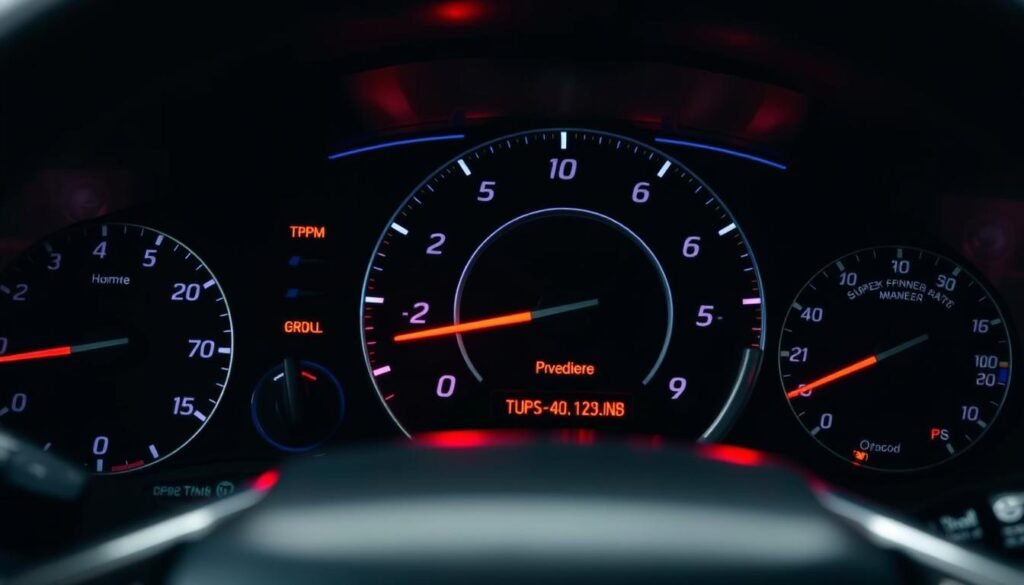
What To Do If The TPMS Light Is Flashing?
Seeing the honda civic tpms light flash means something needs fast action. It might be because the tires are not filled right or there’s a problem with the Tire Pressure Monitoring System (TPMS).
First, make sure the tires have enough air, following what the maker says is right. Keeping tires at the right pressure is key for being safe and making sure your car works well.
If after checking, the tires are okay but the honda civic tpms light keeps flashing, then the TPMS might be broken. This means you need to figure out what’s wrong with the TPMS.
Getting help from someone who knows a lot about cars is a good idea. Ignoring a flashing TPMS light can be very dangerous. It could even cause your tires to fail.
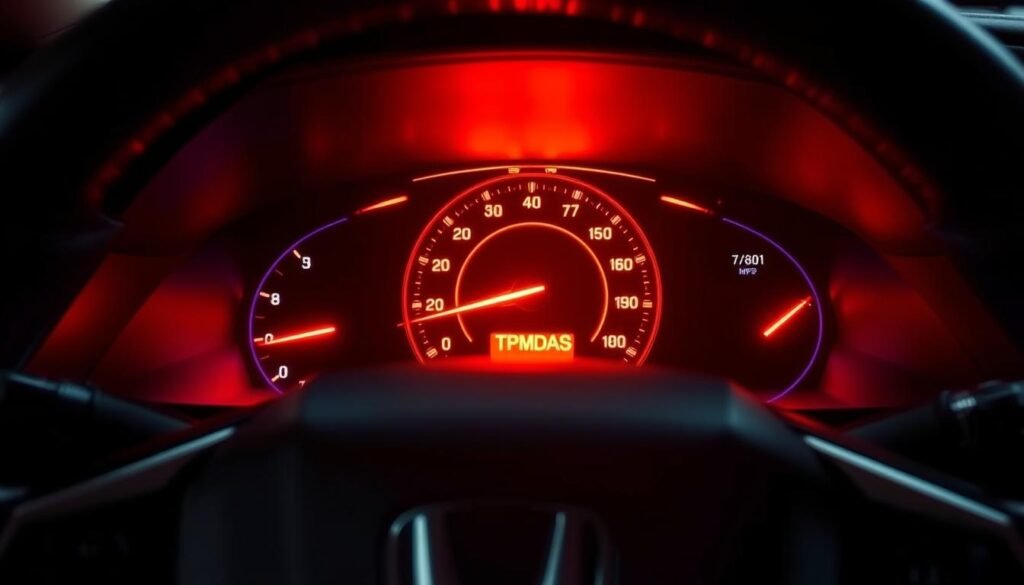
Safety Features and Benefits of A Functional TPMS
Having a functional TPMS in your Honda Civic is key to safer driving. It keeps an eye on tire pressure and warns you if it gets too low. This lets you act quickly to prevent danger.
Proper tire inflation means your Honda Civic handles better, uses less fuel, and the tires last longer.
Good tire pressure keeps the car stable, especially when turning or in fast conditions. It also reduces the risk of tire blowouts for a smoother trip.
The TPMS gives you updates in real-time, making driving safer. It lets you fix tire pressure problems quickly.
Safety features like this in the Honda Civic boost comfort and the car’s dependability. Knowing your tires are in top shape lets you drive confidently, no matter the road ahead.
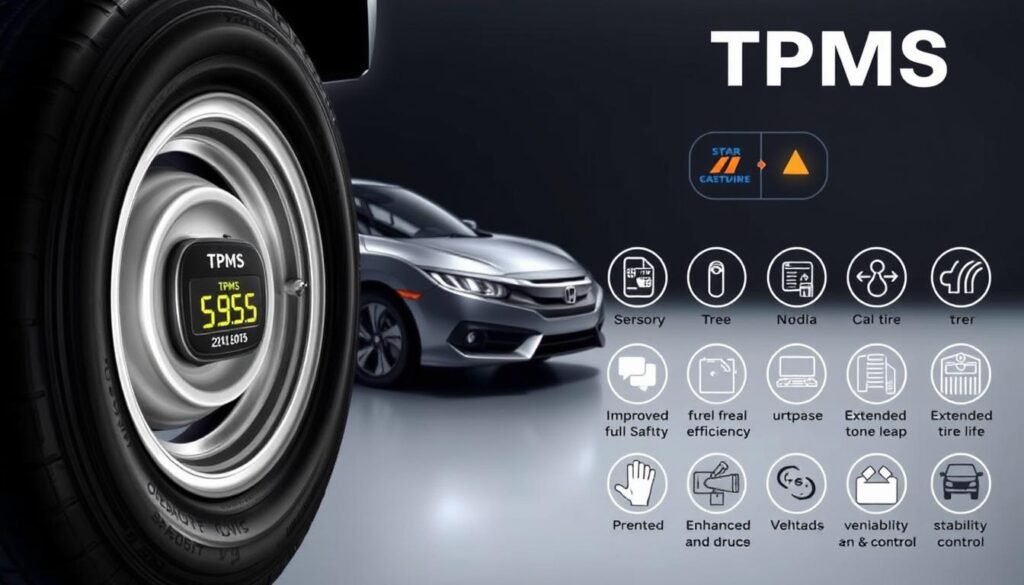
Tips For Maintaining Correct Tire Pressure
Keeping the right tire pressure is key for your Honda Civic to perform well and safely. You should check your tires at least once every month.
This includes your spare tire too. Use a dependable gauge to check. Make sure to inflate them to the pressure the maker suggests.
You can find this info in the owner’s manual or on a label on the car’s door. The weather can also impact your tire pressure.
For example, when it gets colder, your tire pressure might drop. It’s important to think about the weather changes to keep your tires right.
During your checks, look out for any wear, damage, or punctures to keep your tires in top shape.
| Action | Frequency | Details |
|---|---|---|
| Check Tire Pressure | Monthly | Use a reliable tire gauge for accuracy. |
| Inflate Tires | As Needed | Follow the manufacturer’s guidelines on tire pressure. |
| Inspect Tires for Damage | Monthly | Look for visible wear, punctures, and irregularities. |
| Seasonal Adjustments | As Seasons Change | Be aware that temperature fluctuations can affect pressure. |
Conclusion
Knowing how to reset the tire pressure light in your Honda Civic is crucial for the car’s performance.
Tire pressure is important for a smooth ride, safety, and making your tires last longer. Keeping an eye on it and regular checks are vital.
Having a working Tire Pressure Monitoring System (TPMS) keeps you safe while driving. By using a complete guide to check your tire pressure, you’ll keep it right.
This avoids tire damage or blowouts from wrong tire pressure. Always check your owner’s manual for your car’s specific needs.
If you’re having trouble with the TPMS, get help from car experts. Doing this keeps you safe and your Honda Civic running well.
FAQs
Q: How do I reset the tire pressure light in my Honda Civic?
A: To reset the tire pressure light in new Honda models, start by going to the touchscreen. Navigate to “Settings,” then “Vehicle,” and select “TPMS Calibration.” Finish by choosing “Calibrate.” For older models, locate and press the button on the steering wheel’s left side. Hold it until the light blinks twice. For detailed steps, check your owner’s manual.
Q: Why is my Honda Civic tire pressure light on?
A: Your tire pressure light turns on if a tire is much less inflated than it should be, by 25%. Low pressure can mess up how your car handles and is a safety risk. You should fix the pressure in your tires right away.
Q: What does a flashing TPMS light mean in my Honda Civic?
A: A flashing TPMS light means there’s a problem in the Tire Pressure Monitoring System. This could be a sensor issue or a tire pressure problem. Make sure to check your tire pressures. If the light keeps flashing, it’s wise to get professional help.
Q: How often should I check my tire pressure?
A: It’s good to check your tire pressure once a month and before any long drives. Always check it when the weather changes a lot too. Temperature changes can affect the pressure in your tires.
Q: Can I reset the TPMS myself or do I need a professional?
A: You can usually reset the TPMS on your Honda Civic by following the steps for your model. If the TPMS light stays on or flashes after you’ve tried resetting, you should see a professional. They can find and fix any problems.
Q: Where can I find the recommended tire pressure for my Honda Civic?
A: The right tire pressure for your Honda Civic is in the owner’s manual and on a sticker in the driver’s side door jamb. Always check these sources to know how much air your tires need.
Q: What should I do if I have added air but the tire pressure light doesn’t reset?
A: After adding air, if the TPMS light doesn’t turn off, make sure the tires have the right pressure. If they do and the light’s still on, your sensors might have issues or were not put back right if you recently got new tires. You might need to get the sensors checked by a pro.
Q: What are the consequences of ignoring a TPMS warning light?
A: Not paying attention to the TPMS light can cause bad handling, more gas use, faster tire wear, and increase the chance of tire blowouts. For your safety and car’s performance, always take the TPMS light seriously.

